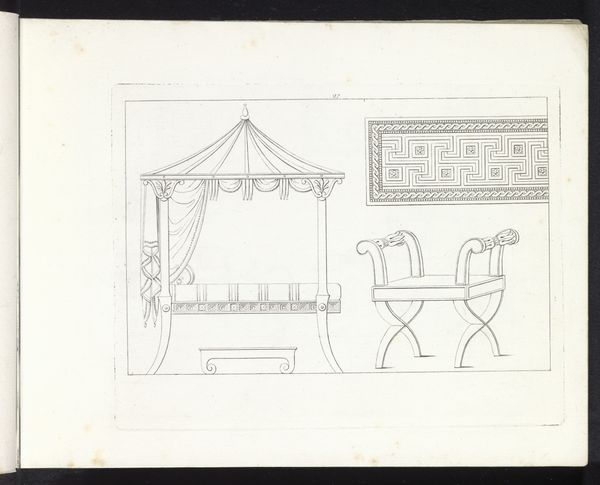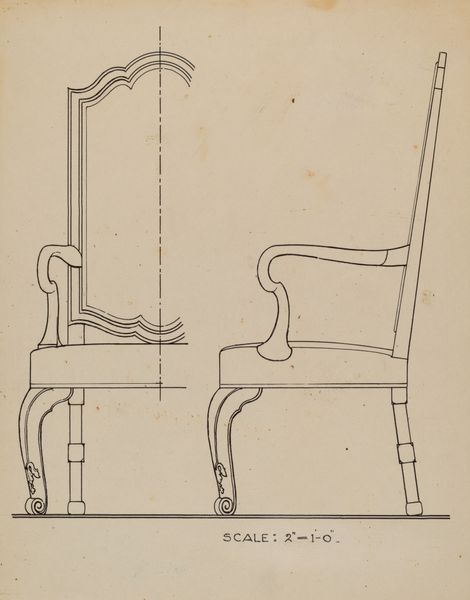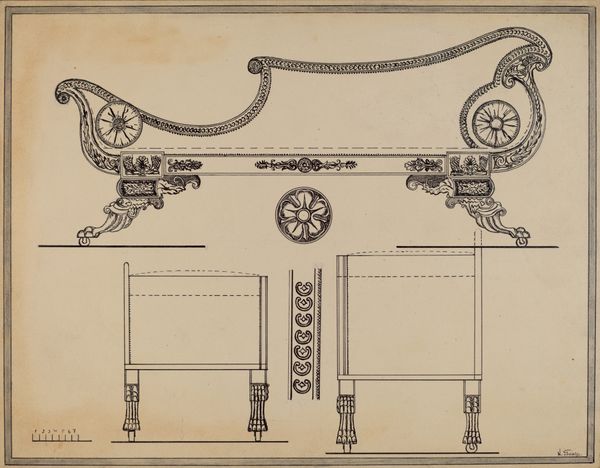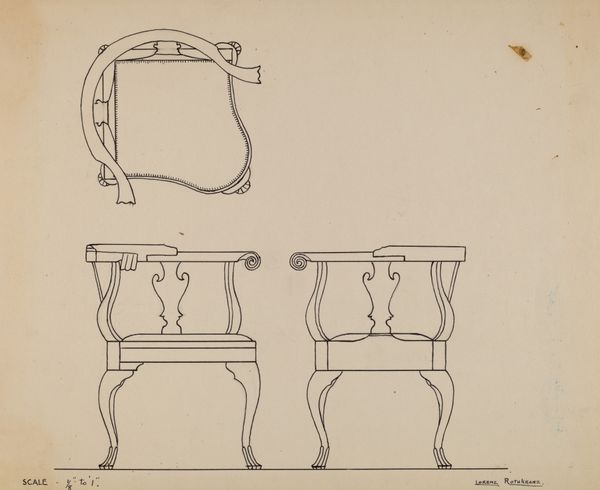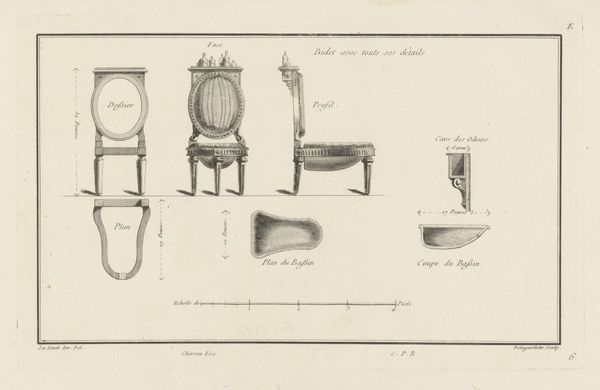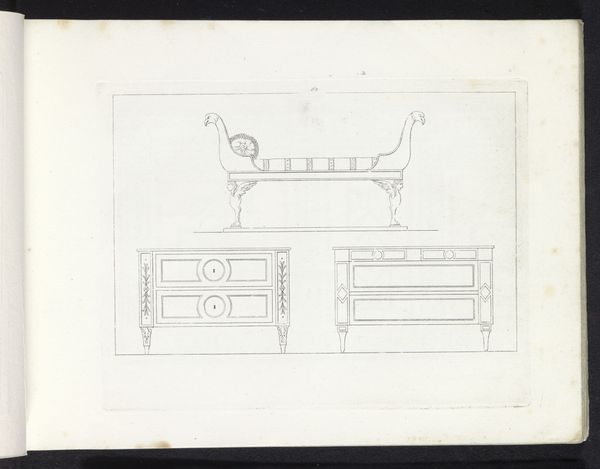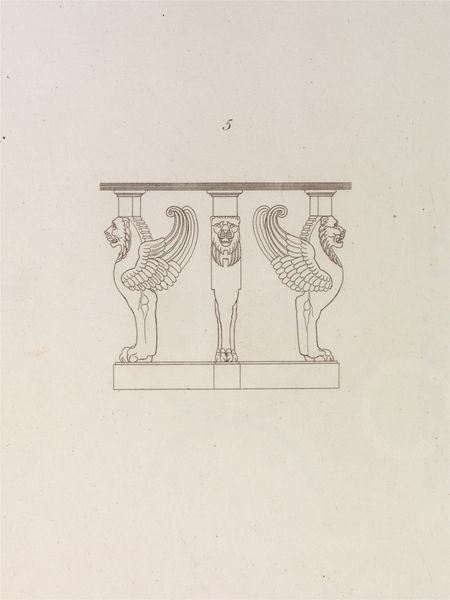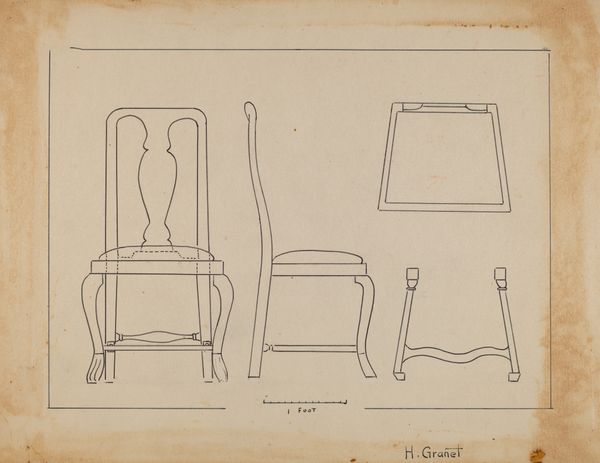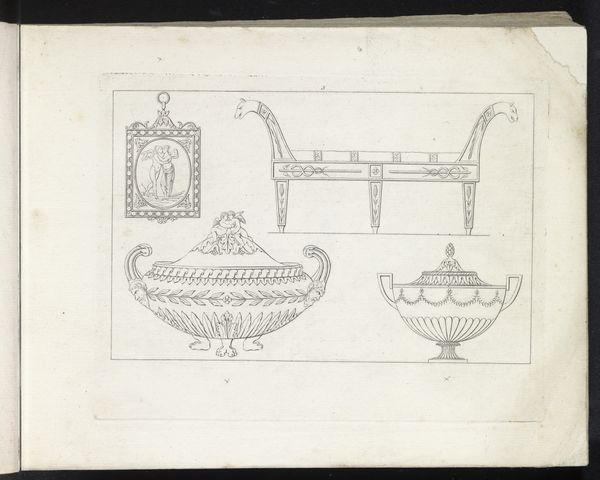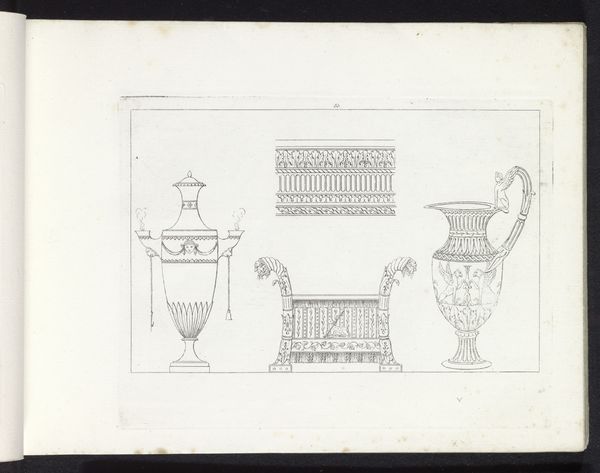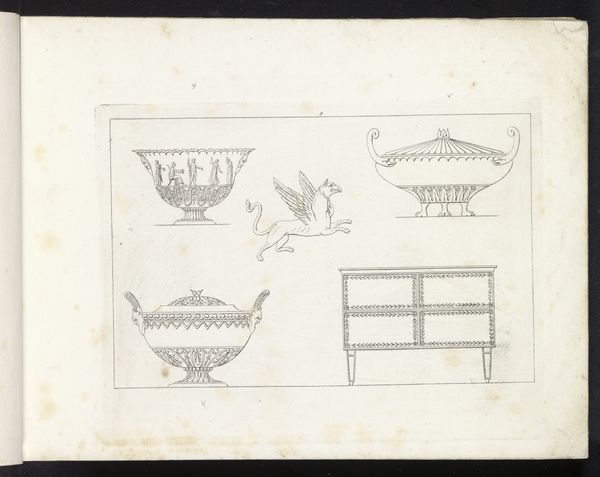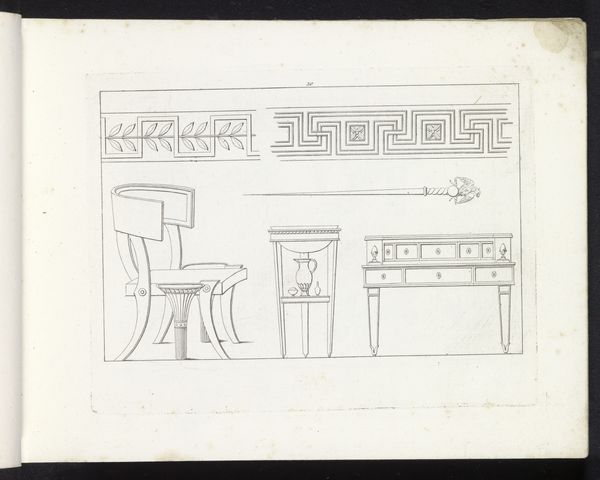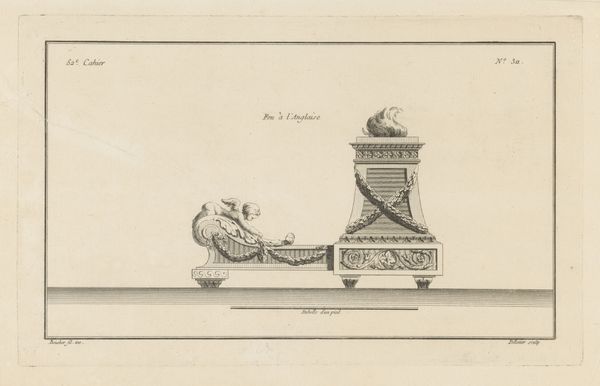
drawing
#
drawing
#
form
#
geometric
#
line
#
academic-art
Dimensions: overall: 22.9 x 28.9 cm (9 x 11 3/8 in.) Original IAD Object: none given
Copyright: National Gallery of Art: CC0 1.0
Editor: This is Nicholas Gorid's "Window Seat," a drawing from around 1940. I'm struck by its almost technical, diagrammatic quality. It feels very precise, like a blueprint. What can you tell me about this drawing? Curator: Well, focusing on the materiality, let’s consider the act of drawing itself in relation to furniture design. Gorid isn't presenting us with a finished, marketable product, but with an intermediary stage in its production. The drawing functions as a kind of instruction, dependent on someone's future labour. Editor: That's interesting. So you're seeing it as less of a finalized artwork and more of a step in the process of creating furniture? Curator: Precisely. Consider the implied labour inherent in turning these lines into tangible objects. The drawing exists as a proposal. I'm curious, what material processes would be needed to complete the production cycle that starts with Gorid's original labor in executing this image? Editor: There’s the labor of the carpenter shaping the wood, and then perhaps upholstery work, if we are to fully consider "Window Seat". Curator: Indeed. Notice too, the seeming tension between the unique 'artistic' status we might be tempted to assign the drawing and the eventual mass reproduction, should this furniture go into large scale manufacture. It challenges the romantic idea of the singular artist. Editor: That makes me rethink my initial impression of it as just a 'blueprint.' It's more about the intersection of art and craft and also the relationship between design and manufacture, which involves many sets of labor. Thanks, that’s really given me a lot to consider. Curator: My pleasure. Recognizing those underlying social and production relations transforms our experience.
Comments
No comments
Be the first to comment and join the conversation on the ultimate creative platform.
